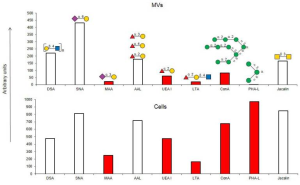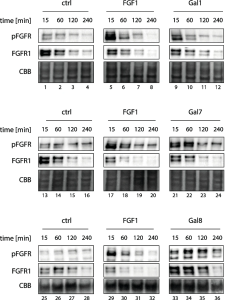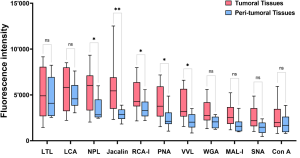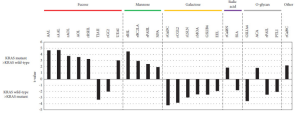Detecting Colorectal Cancer from Glycosylation Profiling Analysisi of Exosomes
A group from State Key Laboratory of Electroanalytical Chemistry, Changchun Institute of Applied Chemistry, Chinese Academy of Sciences, Changchun, China has reproted about Lectin microarray based glycan profiling of exosomes.
https://www.sciencedirect.com/science/article/abs/pii/S0003267024006202?via%3Dihub
In this styudy, the differential analysis of glycosylation on the surface of exosomes between from three olorectal cancer cell lines (SW480, SW620, HCT116) and from one normal colon epithelial cell line (NCM460) has been done by using a lectin microarray. As a result, it has shown that UEA-I lectin could be used to detect aberant glycosylation of exosomes derived from SW480 cells.
And further, in this experiment, the limit of detection (LOD) of UEA-I lectin microarray was calculated to be as low as 2.7 × 105 extracellular vehicles/mL.




